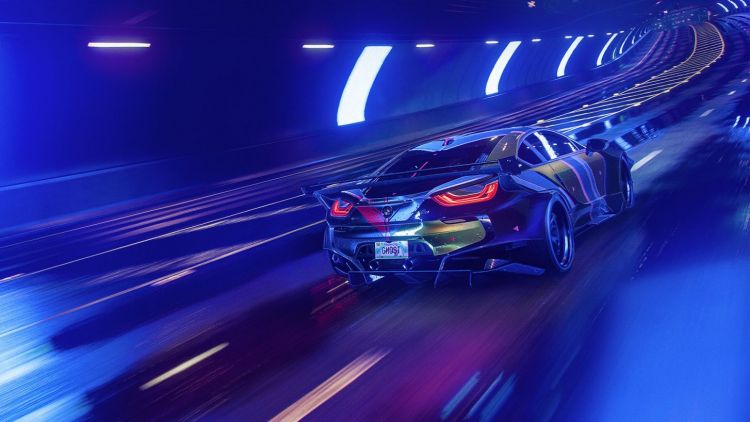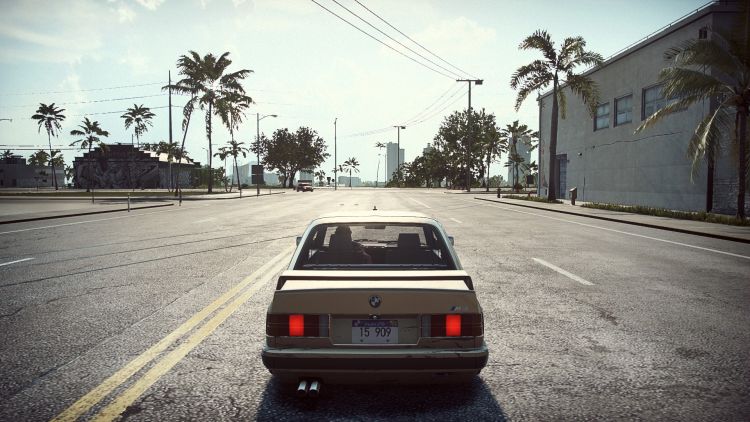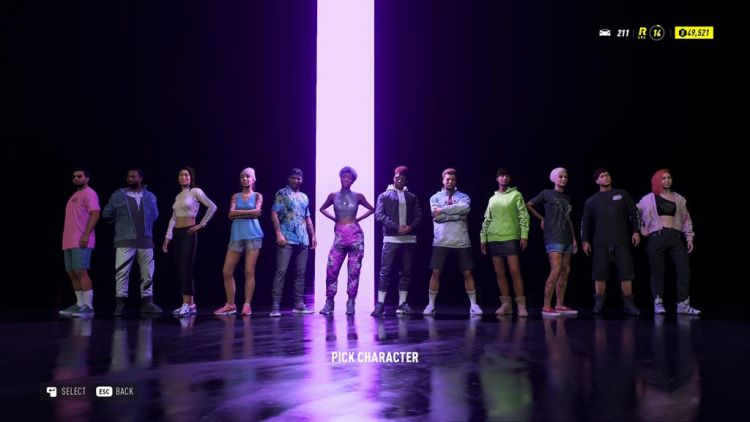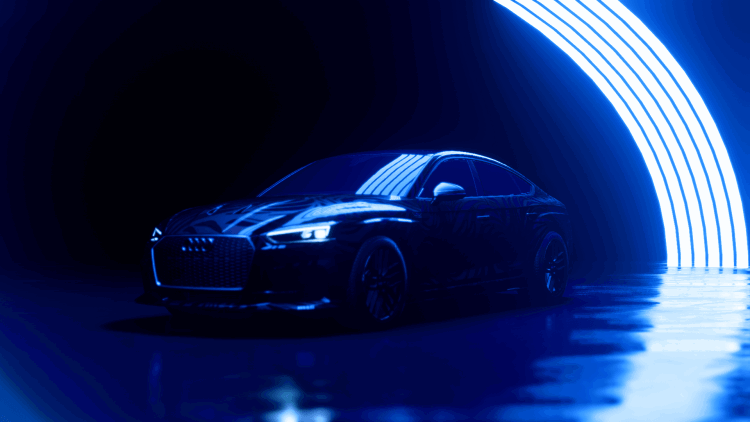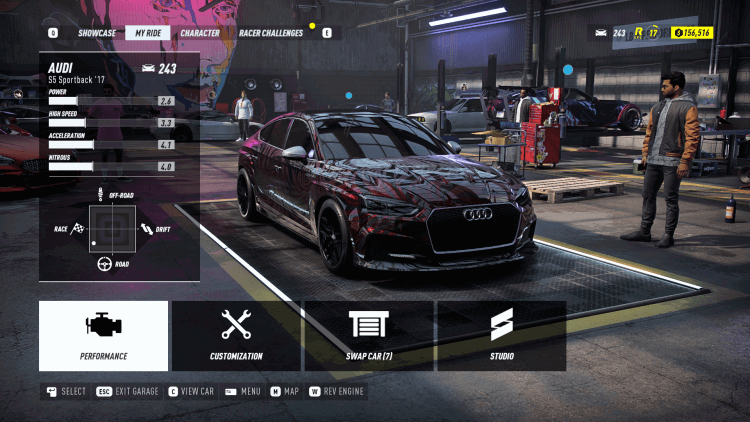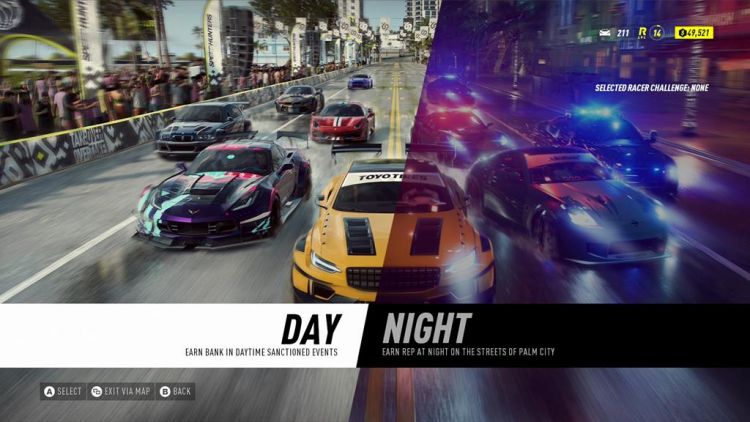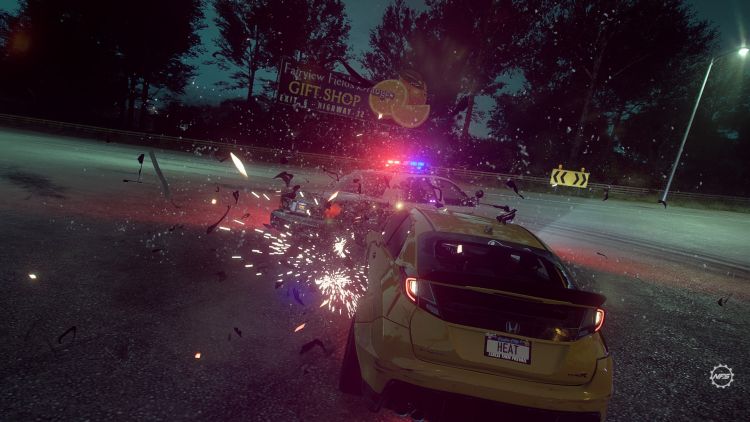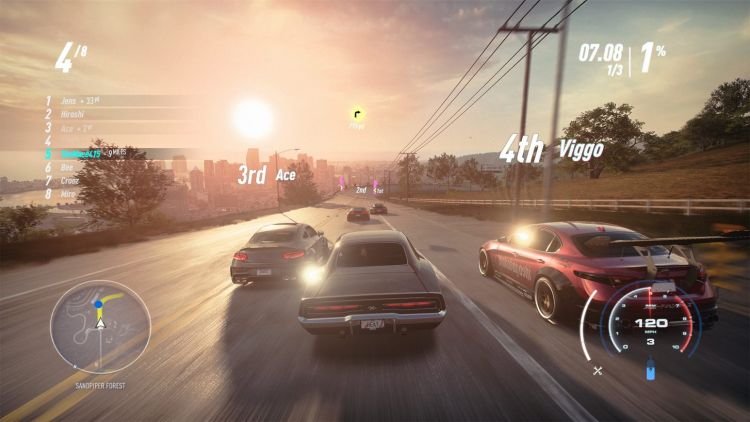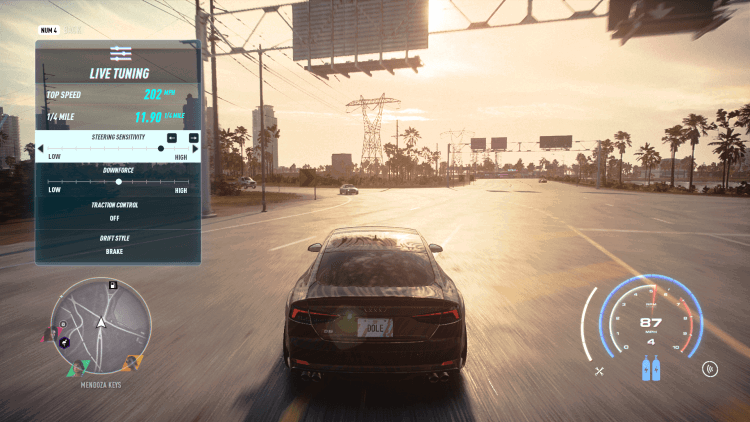Need for Speed Heat almost feels like it’s what the 2015 Need for Speed reboot was supposed to be. The truth is that the Need for Speed series has stumbled a lot in the past decade, ranging from games that have reviewed well to games that have reviewed very poorly. Heat revives the series in a tried-and-true way, finally taking baby steps in the right direction to bring the series back from mediocrity, but doesn’t necessarily push the series further than where it’s already been.
Game Name: Need for Speed Heat
Platform(s): PlayStation 4, Xbox One, PC (Reviewed)
Publisher(s): EA
Developer(s): Ghost Games
Release Date: November 8th, 2019 (November 5th for Origin Access)
Price: $59.99
There are tons of returning features and modes from favorite Need for Speed games of the past, sorely missed from more recent entries in the franchise. The driving mechanics are just the right blend of an arcade racer and relatively realistic physics (this is a Need for Speed game, after all). Game progression is mostly customizable and tailored to how or what the player wants to drive. There’s a respectable amount of car variety ranging from American muscle, JDM tuners, German luxury, Italian supercars and more. The narrative certainly doesn’t innovate by any means, but the story at least attempts to lean into car culture in a way that isn’t too particularly offensive or colorblind. It’s much better than Payback or 2015’s Need for Speed, but honestly, that’s not saying much.
Players take control of the typical “new in town” street racer hero who, of course, wants to make a name for themselves in a new region. The goal is to rack up enough reputation to enter “The League,” which is essentially Heat’s version of “The Blacklist” from the original Need for Speed Most Wanted. Again, nothing too emotionally gripping or engrossing, just enough to give players a point to all this illicit racing.
The player can pick from a pre-set list of avatars, and to further customize their clothing and accessories after the fact. Because of this, the player’s character takes a rightfully appropriate spot in anonymity throughout the story, doing their best to be as blank of a canvas as possible without over-asserting themselves and becoming any specific archetype other than a vague street racer. It strikes a perfect balance of unimportance: It’s miles better than 2015’s Need for Speed where the player’s character is a lifeless robot camera that fist bumps and pounds a Norman Reedus amount of Monsters down their throat, but they’re also not as invasively corny like the caricatures that were present in Payback’s protagonists. As for the supporting cast, well, they can be very hit or miss depending on which scene is playing out, but stereotypical performances are nothing out of the ordinary for a Need for Speed title’s plot.
Players get to compete in Palm City, a Miami-inspired metro that’s absolutely gorgeous at night yet oddly bland during the day. While Need for Speed Payback had noticeably downgraded graphical fidelity, Heat draws from 2015’s Need for Speed and focuses on making the cars and environments as aesthetically interesting as they can be. Palm City at night, with its cool-colored, bright neon style makes a very visually appealing aesthetic that strongly evokes a fantastic Need for Speed Underground-esque atmosphere.
Daytime Palm City is considerably less interesting in terms of visuals, with most of the environment appearing washed out amid the warm orange lighting of the sunset. That’s not to say there isn’t effort put into the world around you, it just doesn’t match the cohesive quality seen in the city at night. There are some issues with sluggish texture streaming and low-res graphics as well (thanks Diego), but for the most part, the attention to detail is pretty on par with other racing games. The same can be said of the cars in the game as well, which all look as stunning as they should.
Need for Speed Heat begins with a starting lineup of three cars, but players can unlock up to 127 vehicles throughout the game by increasing their reputation and making bank. Pretty much all the major car-makers (save for Toyota since they’re primarily licensed with Gran Turismo) are present in Heat. Many iconic and modern vehicles are present, ranging from the Lamborghini Countach to the Ford Focus, and even a certain M3 GTR that shows up a little later on.
Each car can be customized both performance-wise and how it looks. Similar to the visual system included in 2015’s Need for Speed, you can swap bumpers/fenders/spoilers/etc. and apply your own custom liveries as well. You can even change the tone of what your car’s exhaust sounds like, which if you’re a car enthusiast, is very entertaining and brings the personalization to a whole new level. Gone are the speed card, microtransaction traps that were pervasive throughout Need for Speed Payback. Now if you want to upgrade or customize your car, all you have to do is win races, make in-game money, and buy what you want, no real-world currency required. It’s a welcome reprieve and a huge improvement.
Racing in Need for Speed Heat is a double-edged sword, but it mostly works. Reputation and rewards function a little differently, since Heat introduces a dynamic between night and day where each time represents a different avenue of progression. Races during the day barely reward reputation points to level up your character, but they pay out twice as much money for new cars and upgrades. Night races, on the other hand, make you much less money, but you receive plenty of reputation points per race that’s boosted based on what your heat level is. Reputation is used as experience to level up your player, which in turn unlocks harder races, more cars, and more story missions.
A player’s heat level measures your notoriety with the Palm City police force. The more you race and the more chases you get into with the cops, the higher your heat level becomes per night. There are five heat levels, and each is used as a multiplier applied to your accumulated reputation. In theory, you can race as much as you want at night and get your heat level as high as possible. The catch is the higher your heat level is, the harder it becomes to avoid and lose the cops in a chase.
It is important to note that police in Need for Speed Heat are meant to be far more intimidating than in past games. Games like Most Wanted and Hot Pursuit made them your adversaries but designed them as enemies that you can take out to continue racing. In Heat, cops are a much more tangible threat that are lethal and dangerous to tackle. The player’s vehicle has limited health, so you can’t just smash cops off the road without damaging yourself as well, furthering exemplifying the risk/reward design philosophy.
It’s clear that cops were inherently designed to be a much greater threat in Heat, and rather than being enemies that you can theoretically defeat, they’ve become more of an impending doom that can be hard to escape even at the lowest levels early on. It’s a formula that differs wildly from police in the past, and it is an interesting change but may not be one that’s universally appreciated.
While overall this time duality is an interesting and ambitious idea, it makes driving at night infinitely more interesting and challenging compared to driving during the day. Day races feel like a time-consuming money chore rather than a valued part of the racing experience. In comparison to racing during the night, it’s severely lacking, where not only your opponents are better racers, but you also have to deal with civilian traffic and police chasing you mid-race as well. If it weren’t for the money bonuses, there wouldn’t be any point to drive during the day.
At least if you’re driving during the day, you can experiment with and enjoy the driving mechanics on there own in Need for Speed Heat. For the most part, driving does accomplish a really capable balance of arcade-y and skill-based mechanics. Drifting specifically has been tweaked from earlier entries to be much easier to initiate, but not as easy to maintain around corners. Unless you fully spec out your ride to be a traction-less drift machine, it can take a bit of getting used to how your car handles when the tires break loose.
Drifts no longer have to be initiated by handbrake, but instead can be started by releasing and tapping the throttle button and then turning. This change, in particular, isn’t the greatest because it can make what initiates a drift rather ambiguous. Often I would try to tap/double tap the throttle to begin drifting, and it would work maybe 70% of the time, but sometimes I would just keep coasting into the corner unless I tapped again or hit the handbrake manually, which results in a huge loss of speed.
Luckily the game does give you an option to swap between tapping gas to drift or brake to drift. It makes more sense to me, logically and functionally to change the drift from throttle to brake, which feels much better in action But since that’s not the default setup for drifting, it creates an easy annoyance early on that otherwise doesn’t need to be there. Changing drift initiation lives under a convenient new menu setup called Live Tuning, which is an in-game menu that can be accessed at all times regardless of whether you’re racing or just in free roam. From there you can also turn traction control on or off, as well as change steering sensitivity and downforce on the player’s vehicle. It’s a small feature, but a welcome one nonetheless.
Beyond a few minor tweaks here and there, and some new ideas sprinkled throughout, Need for Speed Heat mostly succeeds where it iterates on previously pioneered ideas. Some of the new ideas such as the day/night dynamic or the risk and reward system of police encounters certainly reflected a desire for ambition and innovation, but they just didn’t feel as fleshed out as they could have been. And while the many other returning modes and features present in previous Need for Speed games are great, they’re safe additions to Heat that are proven to mesh well with the gameplay simply because it’s worked in previous entries.
That’s not to say you should skip this game, because there’s a lot to enjoy in Need for Speed Heat, but you should only play this game fully knowing you’re going to find the majority of your enjoyment through gameplay elements from the several Need for Speed games that came before it.
Review Disclosure Statement: For more information on how we review video games and other media/technology, please go review our Review Guideline/Scoring Policy for more information.
Affiliate Link Disclosure: One or more of the links above contain affiliate links, which means at no additional cost to you, we may receive a commission should you click through and purchase the item
Need for Speed Heat
Beyond some few minor tweaks here and there, and some new ideas sprinkled throughout, Need for Speed Heat mostly succeeds where it iterates on previously pioneered ideas.
Pros
- Night racing is wonderfully challenging
- Impressive, Underground-inspired aesthetic
- Driving is a solid balance of arcade & semi-realism
- Great car customization
- No predatory microtransactions
Cons
- Ambitious day/night cycle feels unbalanced
- New police mechanics may not be for everyone
- Default drift mechanics are mechanically vague
- Story is just fine


